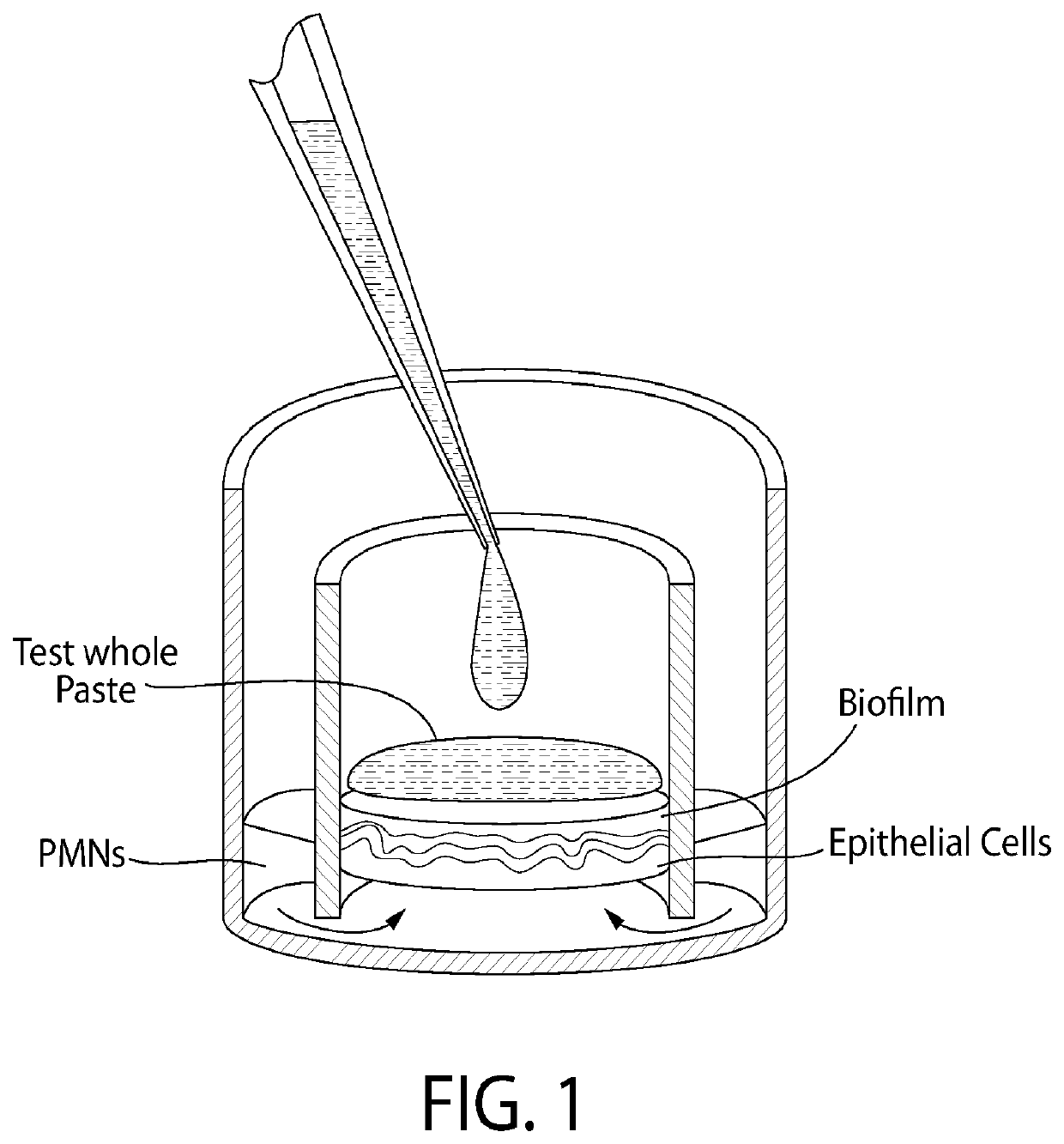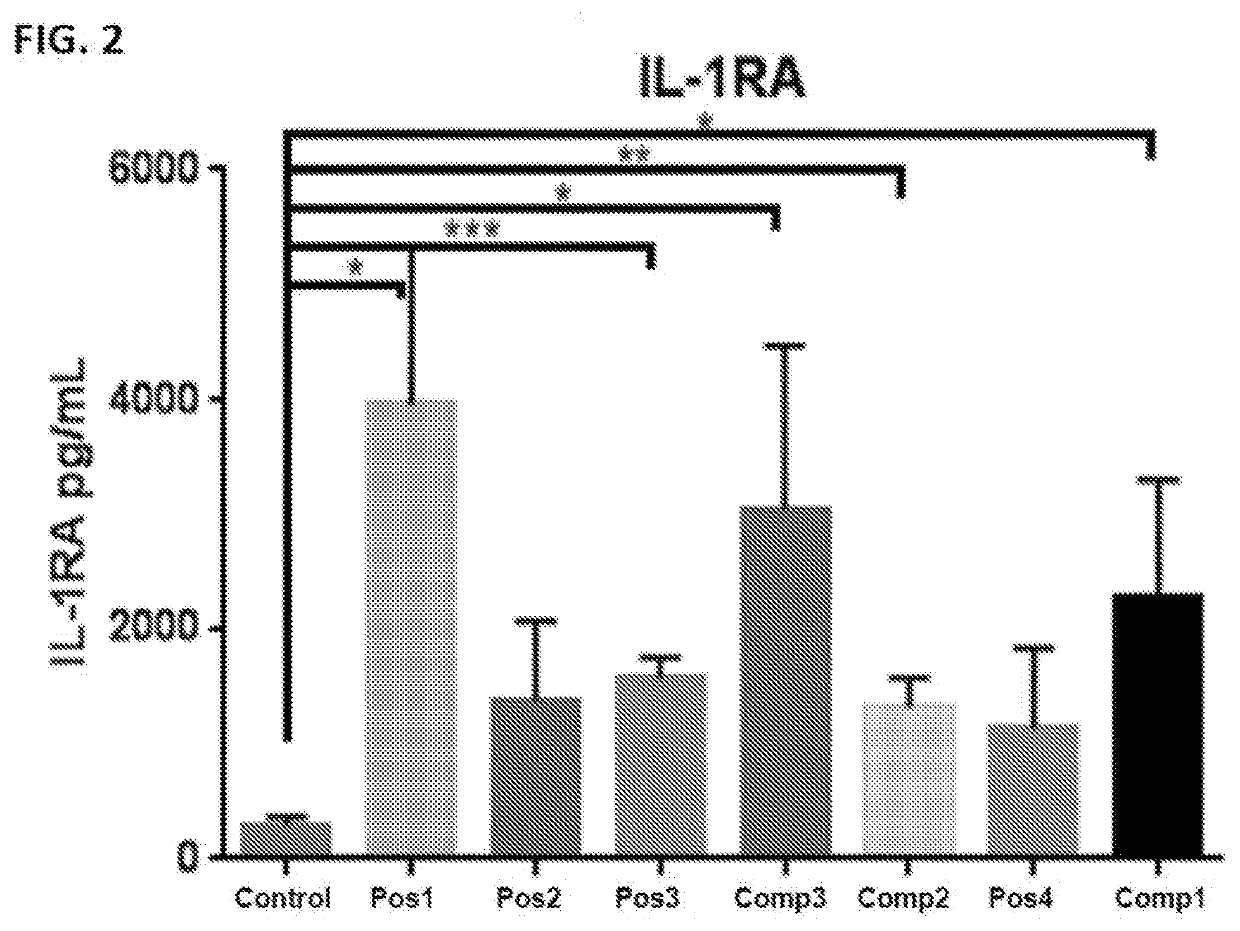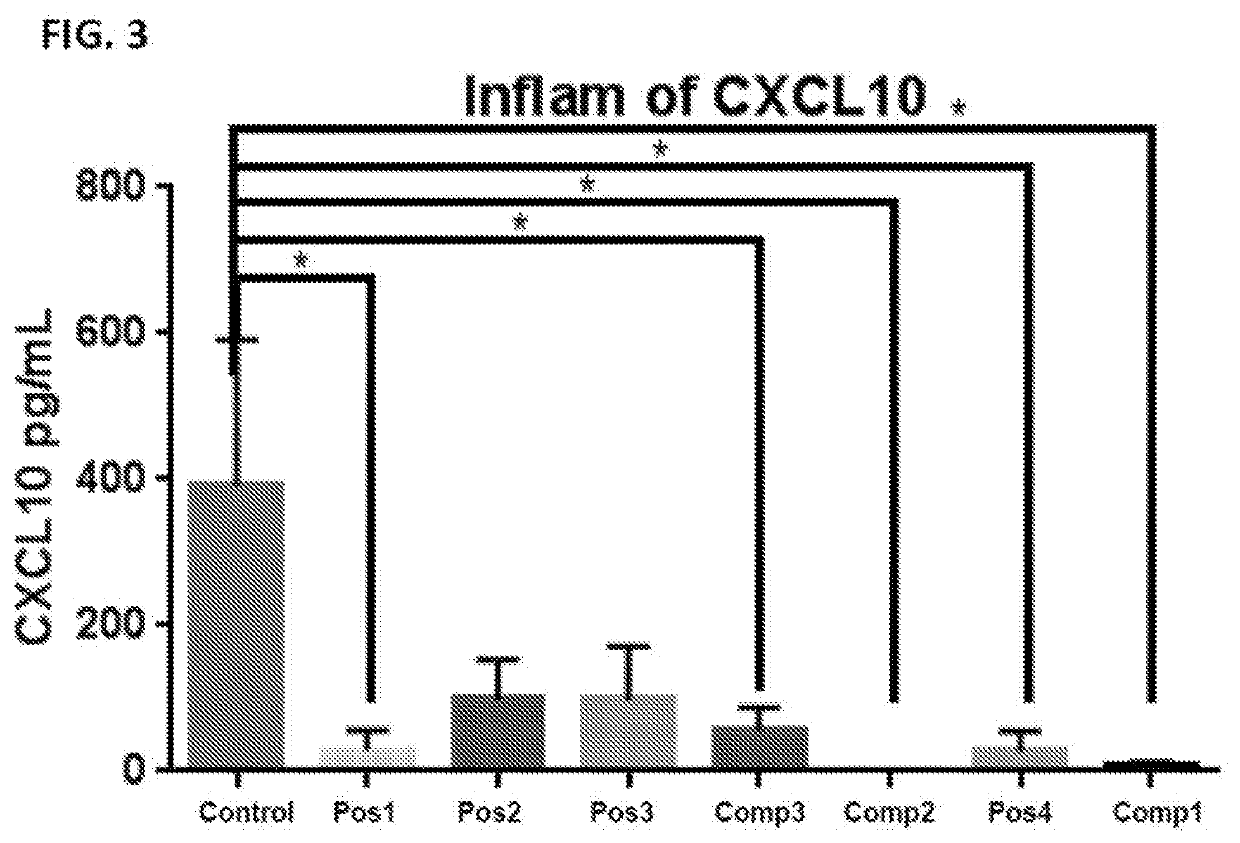Methods of Inhibiting Neutrophil Recruitment to the Gingival Crevice
a technology of neutrophil recruitment and gingival crevice, which is applied in the direction of digestive system, dentistry, drug compositions, etc., can solve the problems of destroying the bone and tissue responsible for supporting teeth, accumulation and hardening over time, and permanent damage to teeth and jaws, so as to promote healthy gums and good oral health
- Summary
- Abstract
- Description
- Claims
- Application Information
AI Technical Summary
Benefits of technology
Problems solved by technology
Method used
Image
Examples
example 1
[0053]FIG. 1 contains an illustration of the Gingival Crevice Model (GCM). The GCM is useful to assess product health benefits in a cell culture model that closely mimics a gingival crevice. The gingival crevice is home to hundreds of bacterial species along with gingival epithelial cells and neutrophils. Proteomics of secreted or expressed proteins, bacterial impact and odor can be evaluated and used to compare the impact of various compounds and compositions. The GCM combines three components, neutrophil-like cells, biofilm that includes oral bacteria, and oral epithelial tissue.
[0054]Neutrophil-like cells: HL60 cells (ATCC #CCLO-240) can be induced to differentiate into a neutrophil-like cell types by contacting the HL60 cells with retinoic acid. HL60 cells are maintained at a cell density of 1×105 cells / mL (Media for HL60 IMEM ATCC #30-2005). Retinoic acid for differentiation of HL60s into neutrophil-like is prepared by dissolving retinoic acid into ETOH to produce a 1 mM soluti...
example 2
[0072]Oral compositions that comprise arginine are disclosed in WO / 2011 / 123123, which corresponds to U.S. Pat. No. 8,652,495, which are both incorporated herein by reference. In some embodiments, the oral care composition comprises an orally acceptable vehicle; zinc oxide particles; and arginine. In some such embodiments, zinc oxide particles have a median particle size of from 1 to 7 microns; in some such embodiments, the zinc oxide particles have a particle size distribution of 3 to 4 microns, a particle size distribution of 5 to 7 microns, a particle size distribution of 3 to 5 microns, a particle size distribution of 2 to 5 microns, or a particle size distribution of 2 to 4 microns. In some of these variously described embodiments, the zinc oxide particles are present in an amount of up to 5% by weight, such as from 0.5 to 2% by weight based on the total weight of the oral care composition. In some of these variously described embodiments, the zinc oxide particles the source of ...
example 3
[0073]Oral compositions that comprise arginine are disclosed in WO 2014 / 088572, which corresponds to US 2015 / 0313813, which are both incorporated herein by reference. In some embodiments the oral care composition comprises: from about 0.05 to about 5% by weight, of a zinc ion source; a fluoride ion source in an amount effective to deliver from about 500 to about 5,000 ppm fluoride, and from about 0.1 to about 10%, by weight, of arginine. In some such embodiments, the zinc ion source is selected from zinc citrate, zinc sulfate, zinc silicate, zinc lactate, zinc phosphate, zinc oxide, and combinations thereof, for example, in an amount effective to inhibit erosion. In some such embodiments, the oral composition is in the form of a dentifrice comprising an abrasive. In some such embodiments, the amount of zinc is 0.5 to 4% by weight. In some such embodiments, the compositions may further comprise one or more abrasives, one or more humectants, and one or more surfactants. In some such e...
PUM
| Property | Measurement | Unit |
|---|---|---|
| particle size | aaaaa | aaaaa |
| particle size | aaaaa | aaaaa |
| particle size distribution | aaaaa | aaaaa |
Abstract
Description
Claims
Application Information
 Login to View More
Login to View More - R&D
- Intellectual Property
- Life Sciences
- Materials
- Tech Scout
- Unparalleled Data Quality
- Higher Quality Content
- 60% Fewer Hallucinations
Browse by: Latest US Patents, China's latest patents, Technical Efficacy Thesaurus, Application Domain, Technology Topic, Popular Technical Reports.
© 2025 PatSnap. All rights reserved.Legal|Privacy policy|Modern Slavery Act Transparency Statement|Sitemap|About US| Contact US: help@patsnap.com



